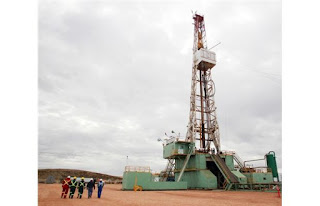The month of September has come to an end. Therefore, it's time to update the portfolio. The market in China continues to show weakness. The price of a barrel of crude oil continues to remain below $50.00. The low price of crude oil has boosted the manufacturing sector but has hurt a lot of companies in the energy sector. These are just some of the reasons why the declines in the market over the past several months.
On September 1, I
purchased 5.066 shares of Enbridge at a cost of $52.31 for a cost of $265.00. This was directly though the transfer agent, so the only cost to acquire these shares is a price of a stamp. On September 1, Enbridge also paid a dividend. Therefore, the shares I already owned through the transfer agent were dripped.
On September 18, I wrote about a
covered call transaction. I sold a call option in Royal Bank with a January 16, 2016 expiration. I received a premium of $64.05 including commissions. A covered call allows an investor to receive more income as the premium is paid to me for being obligated to sell my 100 shares on or before the expiration date. I get to keep the premium regardless if the stock goes above $80.00, goes lower or sideways.
On September 21, I
sold my 50 shares in Restaurant Brands International. The profit on my position was $64.76 excluding dividends. Restaurant Brands International is the parent company that consists of Burger King and Tim Hortons. Burger King and Tim Hortons are run as separate companies, so the parent company breaks the earning up for the two restaurant chains when they report earnings.
On September 24 , I purchased 47 shares of Dream REIT in my Tax Free Savings Account. Dream Office REIT has most of their buildings in major urban centers in Canada. This purchase allowed to to
average down on my position of Dream REIT and also gave me enough shares to DRIP. I turned on the DRIP immediately for this position.
I completed a couple of trades which involved short selling. With short selling, an investor or trade first borrows the shares and then immediately sells them. This action is done by clicking sell instead of buy. The goal of short selling is to buy the shares back at a lower price and then return them to the broker. The profit or loss in short selling is the different between the sell price and the bought price minus the commissions. The trades were in the same stock, which was Agnico Eagle Mines Limited on the Toronto Stock Exchange. You can read about these trades
here.
I ended the month off with two more trades. One trade was completed and the other is still option. I
completed a trade in Cominar REIT inside my margin account. I made a very small profit on this trade to the tune of $8.56. For disclosure, I own 44 units of Cominar REIT inside my TFSA still. The last action of the month was
selling a put option in Telus Communications. I sold a Oct 16, 2015 put option with a strike price of $42.00. I collected a premium of $43.05 after commissions.
Shares added due to drip
0.065 shares ENB @ 51.26 for a total of $3.33
3 shares of ERF @ $7.19 for a total of $21.57
1 share of KMP @ $10.00 for a total of $10.00
11 shares of JE@ $8.07 for a total of $88.77
As
of October 1 of 2015, the value of my portfolio stands at $78639.68. This is
an increase
of 4.357%
over last month. I will
update my investing account tab above.
Disclosure: Long JE, KMP, ERF, CUF.UN, D.UN
EDIT: Royal Bank Covered Call was added to the spreadsheet on October 4, 2015. It got overlooked while writing this post and updating the spread sheet on October 2, 2015.
DISCLAIMER
I
am not a financial planner, financial advisor, accountant or tax
attorney. The information on this blog represents my own thoughts and
opinions and should be NOT taken as investment or business advice.
Every
individual should do their due diligence to make their own financial
decisions based on their financial situation and tolerance for risk









